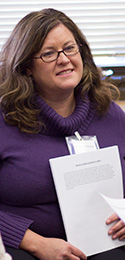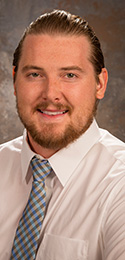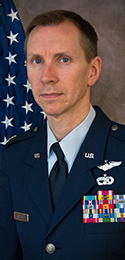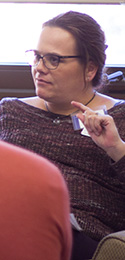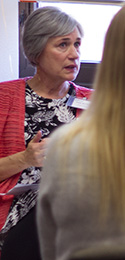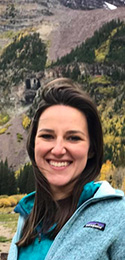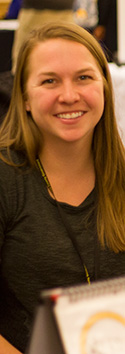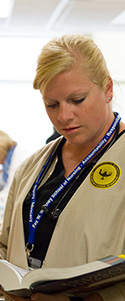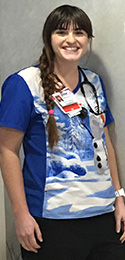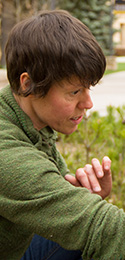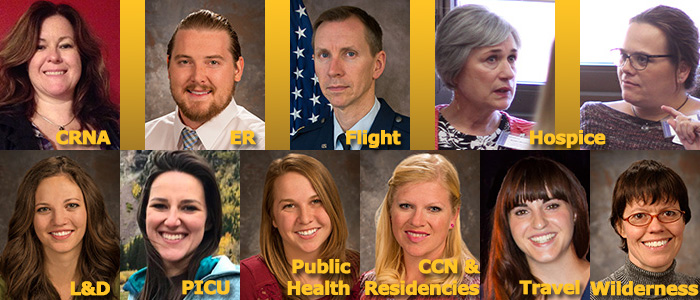
Pictured:
top row l-r: Cynthia Keyfauver, Rustin Myrick, Samuel Millar, Susan Bertilson, Shannon
Smith.
bottom row l-r: Ruth Lewis, Mary O'Connell, Samantha Baker, Michelle Duay, Dani Johnson,
Annie Wislowski.
----------
SPEED MENTORING 2017:
ELEVEN Mentors Share Careers with Students
The 2017 Speed Mentoring session, brought to UW courtesy of the UW Alumni Association Nursing Chapter, was a great success this November. Nine mentors were involved that day, either online or in person, and two (who couldn't be there that day) sent in their information for the spotlight. Scroll down to read about each of the mentors/careers.
What is "Speed Mentoring"?
It's sort of like Speed Dating: we have pods set up for each mentor. When the timer rings, the mentor has four minutes to tell about themselves and their particular nursing career focus. They cover what drew them to that career; how they prepared for it; what they loved best about it; and what was the most challenging. Then students have four minutes to ask questions before taking two minutes to travel to the next pod.
Some Student Feedback
-
"It was a lot of fun, and it gave me more of an idea of where I want to start after school!"
-
"I loved the speed mentoring! Really gave ma an idea of what type of nursing I want to pursue. I liked that there was a large variety."
-
"It was so inspiring and exciting to hear about the myriad of specialties available as I pursue a career in nursing. The advice the speakers offered was very helpful and greatly appreciated. I learned so much, and I hope there are more Speed Mentoring Sessions in the future!"
-
The Skype/FaceTime was a super cool idea and surprisingly worked really well! [One of the mentors was in South Carolina, another in Colorado].
We also received great ideas for making the event even better for upcoming years. Here are a few of the comments:
-
I think if you would allow two more minutes for questions, it would have been even better.
-
Add a professor as one of the spots for next year, mentoring in education.
-
I would have liked to talk to a rural nurse and a travel nurse. [Our travel nurse couldn't come that day to the event, but she sent information that we've included in this spotlight below.]
-
The only thing I would change is that after the session is over, add another 20 minutes for students to go back to mentors. That way they have time to ask more questions to specific fields they liked.
And from onlooking staff
"OMGoodness the event was wonderful. The students were fully engaged, asking lots of questions and enjoying each and every mentor they visited with. I liked how they had to rotate to the next pod, even though they thought maybe they weren't interested, and once seated they showed lots of interest. Very enthusiastic and pleasant event. Do not ever let this event die (maybe add dessert to the menu!)."
MENTORS
Page posted 11/30/2017
woman in a purple sweater with long full brown hair
WHY CRNA and HOW DID YOU PREPARE? "I am a 1966 grad of the UW School of Nursing. I completed my nursing practicum at F.E. Warren Air Force Base in Cheyenne during my final semester at UW. During the practicum, I had several opportunities to follow an Air Force CRNA. I enjoyed the autonomy and variety that the CRNA had in his day, and knew that was the career for me. I served in the US Air Force at Travis Air Force as a critical care RN from 1996-2000. After a few years as a critical care RN at University of Colorado Hospital, I continued my education and received my MS in Nurse Anesthesiology from Albany Medical College in 2005 at Albany, New York. Since my graduate education, I worked at McKee Medical Center in Loveland, Colorado for 6 years, then became an independent contractor/locum tenens CRNA in 2012. Since that time, I have had the opportunity to travel throughout the country as a locum tenens (travel) CRNA." CLICK INTO KEYFAUVER'S NAME titling this entry to go to a complete page answering these questions: (1) What is a CRNA? (2) Where does a CRNA work? (3) Who do CRNAs work for? (4) How much does a CRNA make? (5) What are the education requirements to apply for a CRNA program? (6) Where are nurse anesthesia educational programs located?
ER: Rustin Myrick
WHY EMERGENCY ROOM NURSING? "Probably the unexpected," answers Myrick. "We have to be staffed 24/7. We can be empty one minute and be full 10 minutes later. You don't have to be the best at everything, but pretty good at everything." / HOW TO PREPARE? "I did my capstone in the same ER in which I am now employed. That was like a four-month job interview! I feel like I was lucky to get my start there. Baptism by fire is what I would call it. You feel like you are drowning for a while until you get the hang of it."/ FAVORITE PART OF JOB? "It's the best example of a healthcare team for a critical patient. I feel like when you are trusted, there is a lot of autonomy as a nurse." / BIGGEST CHALLENGE: "You work with the full spectrum of the patient population and all of their different challenges. Prioritization of acuity and load balance. Critical thinking!" / ABOUT MYRICK: "I am from Powell, Wyoming; just bought a house in Laramie and work at Ivinson Memorial. Happily married with two kids (2 1/2-year-old daughter and 5-month-old son). Enjoying Laramie. It's a great place both as a student and after." / MEMORIES FROM UW NURSING: "I don't have a favorite memory, but a plethora of memories! My favorite are of the relationships created with fellow students and faculty. UW nursing gives you the base needed. When it's all over, you realize you know more than you think you know."
Flight Nursing: Maj. Samuel Millar, USAF AFMC USAFSAM/ETT
WHY FLIGHT NURSING? "I wanted to take care of patients,"says Millar, "but didn't want to be stuck in a hospital. The allure of being able to jump on a plane, pick up patients, and take them to another location--all the while working autonomously--sounded fantastic." / HOW TO PREPARE? "I worked in an Air Force hospital straight out of nursing school and had experience in a few different areas. I think those experiences helped me tremendously. It was from this work, too, that senior leaders recommended me for Flight School." / FAVORITE PART OF JOB? "Patient care in the air--and that it took me all over the globe!" / BIGGEST CHALLENGE: "Autonomy and the decision making that went along with it. Most of the time we didn't fly with a physician, so we were it. It was one to two flight nurses and two to three medical technicians that were making that patient movement happen." ABOUT MILLAR: Read more about Major Millar (also our 2009 Distinguished Alumnus) by clicking on his name titling this post.
Hospice: Shannon Smith as Director of Nursing at Laramie Hospice
WHAT DREW YOU TO HOSPICE NURSING? "The opportunity to provide the nursing care to people so they can finish their life journey," says Smith. / WHAT WAS YOUR PREPARATION FOR A CAREER IN HOSPICE? "I have experience in Long-term care, Psych, Med/Surg, and the ER." / FAVORITE PART OF JOB? "Providing patients and their families with hope." / BIGGEST CHALLENGE: "Educating patients, family, community about hospice care; that it's about living to it's fullest." / ABOUT YOURSELF: "I am mother of four adult children," shares Smith. "Originally from San Diego, I moved to Denver as a teenager; then moved to Laramie in 2004 and have been here since. I am currently Director of Nursing at Hospice of Laramie."
Hospice: Susan Bertilson as Social Worker
WHAT DREW YOU TO HOSPICE and to SOCIAL WORK? "A natural tendency to help others," says Bertilson, "and a passion for social justice." / HOW DID YOU PREPARE FOR A HOSPICE CAREER? "I did not. I was in private practice for years, and all of my experience and education were a good fit for Hospice." / FAVORITE PART OF JOB? "Working with families." / BIGGEST CHALLENGE: "Helping other professionals understand/accept end of life." / ABOUT YOURSELF: "I am a Wyoming native; married with two grown children; 1 grandchild and 2 on the way! Working for Hospice of Laramie and in a small private counseling practice."
Labor & Delivery: Ruth Lewis
WHAT DREW YOU TO LABOR & DELIVERY NURSING? "I always knew I wanted to be involved in some sort of newborn care," says Lewis. "When I got this residency position at Ivinson, being a labor and delivery nurse fell into place. Being in L&D has allowed me to care for my favorite tiny humans in a way that allows me to connect so much more to families than I ever dreamed possible. I still get emotional with each beautiful delivery. What an amazing experience to be the one to help grow a family!" / HOW DID YOU PREPARE FOR L&D? "To prepare for this field, I was certified in ACLS, PALS, and NRP, and then I was able to get most of my labor training done at Poudre Valley Hospital in Fort Collins. I spent a couple of months there honing my skills in high-risk labor, then went back to Ivinson to complete my training. Overall, it has been a year and a half of intense training to be proficient on my unit to be an L&D, Pediatric, Nursery, and OB GYN Nurse." / FAVORITE PART OF JOB? "To be a part of the raw and amazing emotion of when patients realize they are parents for the first time. It goes from a pregnancy to a labor to a beautiful family." / BIGGEST CHALLENGE: "When the health of the newborn or my patient is in jeopardy. It is either the happiest of units or the saddest. Losing a baby is one of the most difficult things to experience as an L&D nurse." / ABOUT YOURSELF: "I am currently an RN at Ivinson Memorial Hospital. I graduated from UW in May 2016 and started my job as a Family Care Nurse in June 2016. I currently live in Laramie with my soon-to-be husband and our two dogs and fluffy cat. My favorite memory of being in the nursing program includes all of the late nights of studying with an amazing group of young women. I love the fact that we went from curious and timid students to the capable nurses that we are today!"
PICU: Mary O'Connell
Mary O'Connell graciously stepped in to cover one of our alumni at this speed mentoring affair. ABOUT O'CONNELL: Mary graduated from Michigan State University and moved to Colorado in 2013, when she began her journey with Children's Hospital Colorado as a New Graduate Nurse within the Residency Program on the Medical/Surgical and Pulmonary Unit. PREPARATION FOR CAREER IN PICU: "This experience [in the Residency Program] paved the way for my emerging career with the organization. I have been able to learn, grow, and challenge myself while working on these units. Encountering diagnoses that are so rare there has only been one case noted in Children's Hospital Colorado exposed me to an array of healthcare treatment options and care regimens." / PEDIATRIC INTENSIVE CARE UNIT: "After 3 years of working on the floors, I then transitioned to the Pediatric Intensive Care Unit (PICU) a little over a year ago. There was a steep learning curve from my transition, which kept me motivated to keep challenging myself and absorbing as much information as possible. I am lucky enough to have found my passion, and I truly enjoy the high intensity of the PICU."
Public Health Nursing: Samantha Baker
WHAT DREW YOU TO A CAREER IN PUBLIC HEALTH NURSING? "When I was completing my prerequisites for nursing school," says Baker, "I was required to take an introductory nutrition class. While taking this class, I became increasingly aware of my sheer lack of knowledge around food and the effect it has on our health. I quickly came to realize that food is nature's medicine and the absolute basis of preventative health. I ended up pursuing a dual bachelor's degree in nutrition and in nursing. I knew then that my nursing career was meant to promote health and prevent disease. During my senior capstone at nursing school, I had the opportunity to complete clinical hours at Albany County Public Health with a focus on maternal-child health. This opportunity has since transformed into my first nursing profession. I am able to form long-term relationships with vulnerable populations with the underlying goal of promoting family health, safety, and general productivity. I was so amazed by my exposure to public health and the daily opportunity to inspire change and adoption of healthier lifestyles, that pursuing a profession in public health was a no-brainer. I am infinitely blessed to have the opportunity to work so intimately with women and their families to support them in every aspect of their lives." / CLICK INTO BAKER's NAME titling this entry to go to a complete page where Baker tells a little more about her self and also answers these questions: (1) How did you prepare for Public Health Nursing?; (2) What is your favorite aspect of your job?; (3) What is the biggest challenge in Public Health Nursing?
Residency Programs and Critical Care Nursing: Michelle Duay
WHAT ATTRACTED YOU TO PURSUE A RESIDENCY PROGRAM? "I wanted to find a program that would foster my development," says Duay, "and teach me more about the specific course of nursing I was wanting to pursue. I want to be a nurse in an ICU, which can seem like an impossible task, since most ICU units want experienced nurses. So I was hired at Palmetto Health as a Critical Care Nurse Resident. I had the same orientation and core classes taught to all newly hired nurses, such as charting, policies, procedures, and basic core type classes. After completion of the core classes, the classes became more intense. Each system was retaught in a way that pertains to what I would be seeing in the ICU setting. Also mixed in are classes on simulation, leadership, special populations, pharmacology ICU specific, and more. This program has taught me many things regarding ICU specific care from Titrating pressures, to understanding vent settings, to recognizing and being more prepared for code situations, and especially how to become a nurse fully capable of handling a higher acuity of patient." / CLICK INTO DUAY's NAME titling this entry to go to a complete page where Duay tells a little more about herself and also answers these questions: (1) How did you prepare a residency program and critical care nursing? (2) What is your favorite part of the residency program? (3) What is the biggest challenge in the residency program?
Travel Nursing: Dani Johnson
WHAT DREW YOU TO TRAVEL NURSING? "I became intrigued while attending a Speed Mentoring session through UW Nursing my senior year." HOW DO YOU PREPARE FOR TRAVEL NURSING? "Travel nursing is not something you can do right out of nursing school. Travel nursing organizations look for a nurse who has a few years of experience under their belt. You need to be able to hop right into the action and be flexible to work with whatever comes your way. Different hospitals all do things differently, so you have to be fast in finding the flow of each place and be willing to work with new people, supplies, and medical teams." MANY CHALLENGES: "These jobs require a lot of knowledge on the specialty you are working in (pediatrics for me). Even if you don't know the answers to everything, the key is knowing where to find the answer. There is no 'typical' day as a travel nurse, but experiences include working with a wide variety of patients with a huge variety of diagnoses, working day or night shifts, being moved around to other units, and working with multiple professionals of other disciplines in the medical field." FAVORITE PARTS OF TRAVEL NURSING: "Travel! Also, an interesting aspect of the travel nursing job is learning better ways to do things from multiple facilities and then sharing what I've learned with the places I travel to next. It is a wild ride, and you just have to be open to whatever comes your way each day. It is full of learning though!"
Wilderness Nursing: Annie Wislowski
WHY WERE YOU DRAWN TO WILDERNESS NURSING? "I am interested in wilderness nursing because it's a perfect intersection of my passions," says Wislowski: "Nursing, high-altitude physiology research, and spending time in the mountains/backcountry." / HOW DID YOU PREPARE FOR WILDERNESS NURSING? "I attended some Wilderness Medicine conferences, and got certificates in wilderness advanced life support. I began teaching Wilderness Nursing curriculum at UW, and now I study high-altitude physiology." / WHAT IS YOUR FAVORITE PART OF WILDERNESS NURSING? "I love the challenge of providing care in an austere setting. You have to be creative and problem-solving oriented." / WHAT IS THE BIGGEST CHALLENGE IN WILDERNESS NURSING? "The biggest challenge is that wilderness medicine is mostly populated by physicians; nursing is under-represented. I'm hoping to help change that!" / A LITTLE ABOUT WISLOWSKI: "I am from Phoenixville, Pennsylvania. I am studying at the University of Colorado at the Anschutz Medical campus. I hope to teach Wilderness Nursing to my undergraduate and graduate students, and to research and publish in the field of high-altitude physiology."

